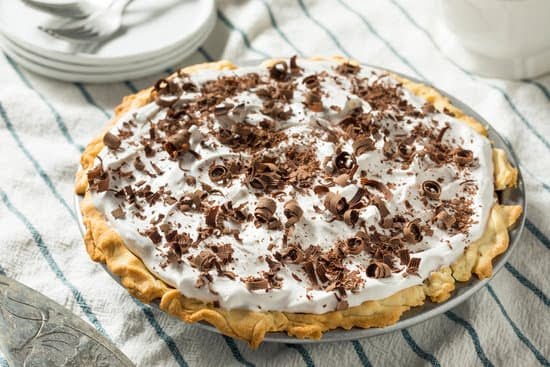Decorating a fondant cake can be a daunting task, especially when it comes to deciding whether to decorate before or after stacking. This age-old dilemma has sparked countless debates among both amateur and professional cake decorators. In this article, we will delve into the intricacies of this dilemma and provide insights and guidance to help you make an informed decision.
Before we dive into the pros and cons of each approach, let’s first understand what fondant is and why it is widely used for cake decoration. Fondant is a smooth, pliable icing made from sugar, water, and flavoring. It allows artists to create seamless designs with its ability to be rolled out and shaped onto cakes. The versatility of fondant has made it a popular choice for creating elaborate decorations that elevate the overall aesthetic appeal of cakes.
Next, we will explore the benefits and challenges of decorating before stacking. This approach allows decorators more freedom in creating intricate details without worrying about damaging the design during the stacking process. However, it also poses difficulties when aligning layers and may require additional touch-ups to ensure a flawless finish.
On the other hand, decorating after stacking offers its own set of advantages and disadvantages. This method ensures better stability by cementing each layer together before adding delicate decorations. However, it requires more precision in measuring and aligning layers during stacking to avoid distortion or misalignment of designs.
Intrigued yet? Stay tuned as we dive deeper into this fascinating topic. Whether you are new to cake decoration or a seasoned pro looking for expert advice, this article will equip you with everything you need to know about decorating fondant cakes before or after stacking. Let’s explore the world of fondant decorations together.
Understanding the Basics
Fondant is a versatile and popular medium used for cake decoration. It is a smooth, pliable icing that can be rolled out and draped over cakes to give them a polished and professional appearance. Made primarily from sugar and water, fondant provides a sleek canvas for creative designs and can be easily molded into various shapes to bring any cake vision to life.
The Benefits of Fondant
Fondant offers several advantages when it comes to cake decorating. Firstly, its smooth texture allows for clean lines and sharp edges, which can be difficult to achieve with other types of frosting. This makes it particularly well-suited for intricate designs or cakes that require a flawless finish.
Another benefit of fondant is its ability to preserve the freshness and moisture of the cake underneath. The thick layer of fondant acts as a protective barrier, preventing air exposure and keeping the cake moist for longer periods of time. Additionally, fondant does not melt easily in warm temperatures, making it an ideal choice for outdoor events or cakes that need to withstand room temperature conditions.
Challenges with Fondant
While fondant has many advantages, it is important to consider the challenges that come with using this type of icing. One common issue is its taste, as some people find fondant overly sweet or lacking in flavor compared to other frostings. However, this can be mitigated by adding flavor extracts or fillings between the layers of the cake.
Another challenge is the time required for preparation and application. Fondant needs to be rolled out evenly and smoothly before being carefully draped onto the cake surface. This process requires patience and skill, as any imperfections or air bubbles can affect the overall appearance of the finished product.
Despite these challenges, many bakers continue to choose fondant due to its aesthetic appeal and versatility in design options. Understanding both the benefits and challenges associated with using fondant will help inform the decision of when to decorate a fondant cake, either before or after stacking.
Pros and Cons of Decorating Before Stacking
Decorating a fondant cake can be a creative and exciting endeavor, but one question that often arises is whether to decorate before or after stacking the cake tiers. In this section, we will explore the pros and cons of decorating before stacking, highlighting both the benefits and challenges of this approach.
One of the main advantages of decorating before stacking is that it allows for greater ease and precision in the decoration process. When each tier is decorated individually, there is more flexibility in maneuvering around the cake and applying intricate details. This can be particularly beneficial when creating complex designs or working with delicate decorations that require careful attention.
Additionally, decorating before stacking can save time and effort, especially when it comes to covering each tier with fondant. By covering each tier individually, you can avoid having to navigate around other tiers or risk damaging the decoration on already stacked cakes. This method also allows for any imperfections or mistakes in individual tiers to be easily fixed without affecting the rest of the cake.
However, there are also some challenges to consider when decorating before stacking. One potential drawback is that it may be more difficult to achieve a seamless transition between tiers if they are decorated separately. It requires careful planning and skillful execution to ensure cohesive design elements flow smoothly from one tier to another.
Furthermore, transporting a fully decorated cake that has been stacked can be more challenging compared to transporting individual tiers separately. The weight of stacked layers can put additional strain on delicate decorations and increase the risk of damage during transportation.
Pros and Cons of Decorating After Stacking
Decorating a fondant cake after stacking it has its own set of pros and cons. It is important to consider these factors before making a decision, as it can greatly impact the final outcome of the cake.
Advantages of Decorating After Stacking
One advantage of decorating after stacking is that it allows for better stability and structural integrity. When the cake layers are stacked before decorating, it provides a solid base for the decorations to be placed on. This can be especially beneficial when creating intricate or elaborate designs that require additional support.
Another advantage is that decorating after stacking allows for better visual alignment. By placing the cake layers on top of each other first, decorators can ensure that the design elements align properly from one layer to another. This creates a more cohesive and professional-looking finished product.
Additionally, decorating after stacking gives decorators more control over the final appearance of the cake. It allows them to see how all the components come together before adding the finishing touches. This way, any adjustments or modifications can be made to ensure a visually appealing and balanced design.
Disadvantages of Decorating After Stacking
One potential disadvantage is that decorating after stacking can be more time-consuming. Since each layer needs to be decorated individually and then assembled, it can take longer compared to decorating each layer separately before stacking them.
Another disadvantage is that mistakes during decoration may require dismantling and reassembly of the cake layers, which could lead to damage or compromise its stability. It requires careful handling and precision during both decoration and assembly processes to avoid this issue.
Furthermore, certain design elements such as draping fabric-like decorations or delicate sugar flowers might be more challenging to add after stacking because they are prone to getting damaged during assembly.
Considering these advantages and disadvantages, it is important for decorators to carefully weigh their options based on their skill level, design preferences, and overall vision for the cake. Some decorators might prefer the stability and alignment that decorating after stacking offers, while others might prioritize convenience and efficiency by decorating before stacking. Ultimately, the decision should be based on what works best for the specific cake design and individual preferences of the decorator.
Expert Opinions and Professional Tips
When it comes to decorating fondant cakes, there is a wealth of knowledge and expertise available from renowned cake decorators. These professionals have spent years perfecting their craft and have invaluable insights to offer on the subject. Here are some expert opinions and professional tips that can help guide your decision on whether to decorate a fondant cake before or after stacking.
- Usha Rani, a celebrated cake decorator with over two decades of experience, suggests decorating the fondant cakes before stacking them. She believes that this approach allows for better control over the design and ensures that every part of the cake is decorated evenly. According to Usha, it is easier to reach all areas of the cake when it is not assembled, making it more convenient to add intricate details and delicate decorations.
- On the other hand, Sylvia Weinstock, a prominent figure in the world of cake decoration, prefers to stack her cakes first and then decorate them. She believes that assembling the cake layers before decorating gives a better sense of how the final design will look. By seeing the structure and proportions of the stacked cake, decorators like Sylvia can make more informed decisions about color schemes, placement of decorations, and overall balance.
- For those who are undecided or prefer a combination approach, Wendy Kromer advises starting with some basic decorations before stacking the cakes, such as covering each tier with a plain layer of fondant or adding simple borders. This way, one can get a head start on decorating while still having flexibility in terms of adding more intricate designs after stacking.
| Cake Decorator | Approach | Advantages | Disadvantages |
|---|---|---|---|
| Usha Rani | Decorating before stacking | Better control over design; even decoration | Potential challenges in reaching all areas of the cake |
| Sylvia Weinstock | Stacking before decorating | Better sense of final design; easier decision-making on color schemes and balance | Limited flexibility to add intricate designs after stacking |
| Wendy Kromer | A combination approach – some decorations before stacking, more intricate designs added after stacking | Easier start on decorating process; flexibility in adding more detailed designs later on | Requires careful planning and coordination between pre – and post-stacking decorations |
These expert opinions and examples offer valuable insights into the various approaches to decorating fondant cakes. Ultimately, the decision should be based on your personal preferences, skills, and the complexity of the design. Experiment with different techniques to find what works best for you, and remember that practice makes perfect in the world of cake decoration.
Considerations for Complex Designs
When it comes to complex cake designs, such as multi-tiered wedding cakes or intricately detailed sculpted cakes, choosing the best approach for decorating with fondant requires careful consideration of several factors. These factors include the stability of the cake structure, the time required for intricate detailing, and the potential for damage during transportation. By taking these considerations into account, cake decorators can make an informed decision about whether to decorate before stacking or after.
One important factor to consider when dealing with complex designs is the stability of the cake structure. Decorating before stacking allows decorators to have a sturdy foundation and easier access to all areas of the cake. This can be particularly beneficial for multi-tiered cakes where precision and attention to detail are crucial. By decorating each tier separately before stacking, decorators have more control over their design and can ensure a flawless finish.
Another consideration is the time required for intricate detailing. For highly elaborate designs that involve hand-painted elements, delicate piping work, or extensive sculpting, it may be more efficient to decorate before stacking. This approach allows decorators to focus solely on perfecting each individual element without having to worry about potential disruptions or damage that may occur during the stacking process.
| Consideration | Decorating Before Stacking | Decorating After Stacking |
|---|---|---|
| Stability of Cake Structure | Provides a solid foundation and easier access | Potential risk of damage during transportation |
| Time Required for Detailing | Focused attention on individual elements | Potential disruptions during stacking process |
However, decorators must also consider the potential risks during transportation. If a cake with intricate decorations is stacked and then transported, there is a risk of them shifting or getting damaged along the way. In such cases, it may be safer to decorate after stacking to reduce the chance of any damage occurring.
Mastering Timing and Efficiency
Decorating a fondant cake can be a time-consuming and meticulous process. It requires precision and skill to create the desired design and ensure that the cake looks flawless. One important aspect of streamlining this process is mastering timing and efficiency.
Timing plays a crucial role in cake decoration, especially when working with fondant. The consistency of the fondant can change over time, making it harder to work with if left uncovered for too long. This is why many cake decorators choose to decorate their cakes after stacking them. By doing so, they can ensure that the fondant stays fresh and pliable throughout the entire decorating process.
To streamline the cake decoration process, it is essential to prioritize efficiency. Creating a timeline or checklist can help you stay organized and ensure that you are utilizing your time effectively. Start by preparing all the tools and materials you will need for decorating before you begin stacking the cake. This includes any molds, cutters, or specialty tools that may be required for your design.
Here is an ordered list of steps to help you streamline the cake decoration process:
- Prepare all necessary tools and materials before starting.
- Stack the cake layers securely using dowels or supports.
- Apply a thin layer of buttercream or ganache to seal in moisture and provide a smooth surface for fondant.
- Roll out the fondant to your desired thickness on a clean surface dusted with powdered sugar or cornstarch.
- Carefully drape the rolled-out fondant over the stacked cake layers, ensuring there are no wrinkles or air bubbles.
- Smooth out the fondant using a smoother tool or your hands, working from top to bottom.
- Trim off any excess fondant using a sharp knife or pizza cutter.
- Proceed with decorating your cake according to your chosen design, adding any additional elements such as flowers, piping details, or edible decorations.
By following these steps and focusing on timing and efficiency, you can streamline the cake decoration process and create a stunning fondant cake efficiently. Remember to take breaks when needed and work at a comfortable pace to maintain accuracy and precision in your design.
Personal Preferences and Skill Levels
When it comes to decorating fondant cakes, personal preferences and skill levels play a significant role in determining whether to decorate before or after stacking. Some decorators prefer to decorate the cake layers individually before stacking them, while others opt to stack the cake first and then decorate it as a whole.
One factor that influences this decision is an individual’s preference for control and precision. Decorating before stacking allows for more control over the design and ensures that each layer is decorated flawlessly. This approach also allows decorators to easily fix any mistakes or make adjustments without affecting the overall appearance of the cake. On the other hand, some decorators find it easier to work on a fully assembled cake because they can envision the final look more accurately.
Skill level is another important factor in determining when to decorate a fondant cake. Beginners may find it less overwhelming to decorate each layer separately before stacking, as it allows them to focus on one section at a time and build their skills gradually. More experienced decorators, who are confident in their abilities, may choose to stack the cake first and then decorate it as it offers them more creative freedom and efficiency.
Ultimately, the decision of when to decorate a fondant cake depends on individual factors such as personal preference and skill level. It is essential for decorators to consider their own comfort levels, artistic style, and available time when deciding which approach is best suited for them. By taking these factors into account, decorators can enhance their creative process and achieve stunning results in their fondant cake designs.
Case Studies and Examples
One of the best ways to understand the dilemma of decorating fondant cakes before or after stacking is by analyzing real-life scenarios and outcomes. Each cake decorator may have their own preferences and approaches, but examining different case studies can provide valuable insights.
In a case study where a cake was decorated before stacking, the decorator applied delicate hand-painted details to the fondant. However, during the stacking process, some of these intricate designs were accidentally smudged or ruined. Despite this setback, the overall appearance of the cake still looked impressive with its beautiful decoration. This example shows that even though decorating before stacking can present challenges, it is possible to achieve stunning results if precautions are taken.
On the other hand, let’s consider a scenario where a fondant cake was decorated after stacking. In this case study, the cake decorator created individual fondant elements separately before assembling them onto the stacked cake layers. By doing so, any potential damage to the decorations during stacking was avoided.
Additionally, this method provided an opportunity to make adjustments and ensure that each element fit perfectly into the overall design of the cake. However, it is important to note that in some instances, working around a fully assembled stacked cake can be more difficult and may limit certain design choices.
Analyzing these case studies highlights the importance of understanding both approach’s advantages and disadvantages. They also emphasize that there is no one-size-fits-all solution when it comes to decorating fondant cakes before or after stacking. The decision should be based on factors such as complexity of design, skill level, personal preferences, and time constraints.
By examining real-life scenarios and their outcomes, decorators can learn from others’ experiences and apply those lessons to their own cake projects. It is crucial for decorators to experiment with different methods and find what works best for them while keeping in mind the specific requirements of each situation. Ultimately, finding the right timing and approach for decorating fondant cakes is a process of trial and error, and it may vary from cake to cake.
Conclusion
In conclusion, the decision of whether to decorate a fondant cake before or after stacking ultimately comes down to personal preference and the complexity of the design. Both approaches have their pros and cons, and it is important to consider factors such as timing, efficiency, and skill level when making this decision.
For those who prefer decorating before stacking, the main advantage is that it allows for easier access to all areas of the cake. This can be especially beneficial for intricate designs that require attention to detail. Additionally, decorating before stacking can save time as there is no need to maneuver around other tiers or decorations. However, this approach may also present challenges such as the risk of damaging delicate decorations during the stacking process.
On the other hand, decorating after stacking offers the benefit of ensuring stability and balance in the overall design. By seeing how each tier fits together, decorators can make adjustments as needed to create a visually pleasing composition. Another advantage is that it reduces the risk of damage during transportation if the cake needs to be moved. However, working around other tiers and decorations can be more difficult and time-consuming.
Ultimately, finding your own sweet spot for fondant cake decoration requires experimentation and experience. It may be helpful to consult with renowned cake decorators for expert opinions and professional tips. Additionally, analyzing real-life scenarios through case studies and examples can provide valuable insights into different outcomes based on various approaches.
Regardless of which approach you choose, mastering timing and efficiency will streamline the cake decoration process. Planning ahead and allowing ample time for each step will help ensure a smooth workflow. Lastly, remember that personal preferences and skill levels play a significant role in determining which approach works best for you.
Frequently Asked Questions
When should you put fondant on a cake?
Fondant should be put on a cake once the base layer of frosting has been applied and is smooth and even. It is important to note that fondant works best on cakes with flat tops and straight sides, as it adheres better to these shapes.
Therefore, if your cake has any uneven or lumpy surfaces, it may be necessary to level and trim it before applying the fondant. Prior to putting fondant on a cake, make sure it is thoroughly chilled in the refrigerator for at least an hour so that it becomes firm and easier to work with.
How do you put fondant on a tiered cake?
When putting fondant on a tiered cake, there are a few steps involved to ensure a successful application. Firstly, each tier should be individually covered with fondant before stacking them together. Carefully measure and roll out the required amount of fondant for each tier so that it can fully cover the top and sides without any creases or folds.
Gently drape the rolled-out fondant onto the top of each tier and smooth it down using your hands or a fondant smoother tool. Trim off any excess at the bottom of each tier using a sharp knife or pizza cutter. Once all tiers are individually covered, stack them using dowels or support systems as needed.
What to do before putting fondant on a cake?
Before putting fondant on a cake, proper preparation is key to achieve a smooth finish. Begin by trimming any domed top of the cake so that it has an even surface for the fondant to adhere to. Next, crumb coat the cake with a thin layer of frosting to seal in any loose crumbs, which will help provide a clean base for the fondant layer.
Allow this crumb coat to set in the refrigerator for about 15-20 minutes before applying another layer of frosting (also known as the final coat). Smooth this final coat as much as possible using an offset spatula or bench scraper; this will help eliminate any imperfections that may show under the fondant. Lastly, ensure the cake is chilled in the refrigerator again for at least an hour to firm up before applying the fondant.

Welcome to our cake decorating blog! My name is Destiny Flores, and I am the proud owner of a cake decorating business named Cake Karma. Our mission is to provide delicious, beautiful cakes for all occasions. We specialize in creating custom cakes that are tailored specifically to each customer’s individual needs and tastes.





